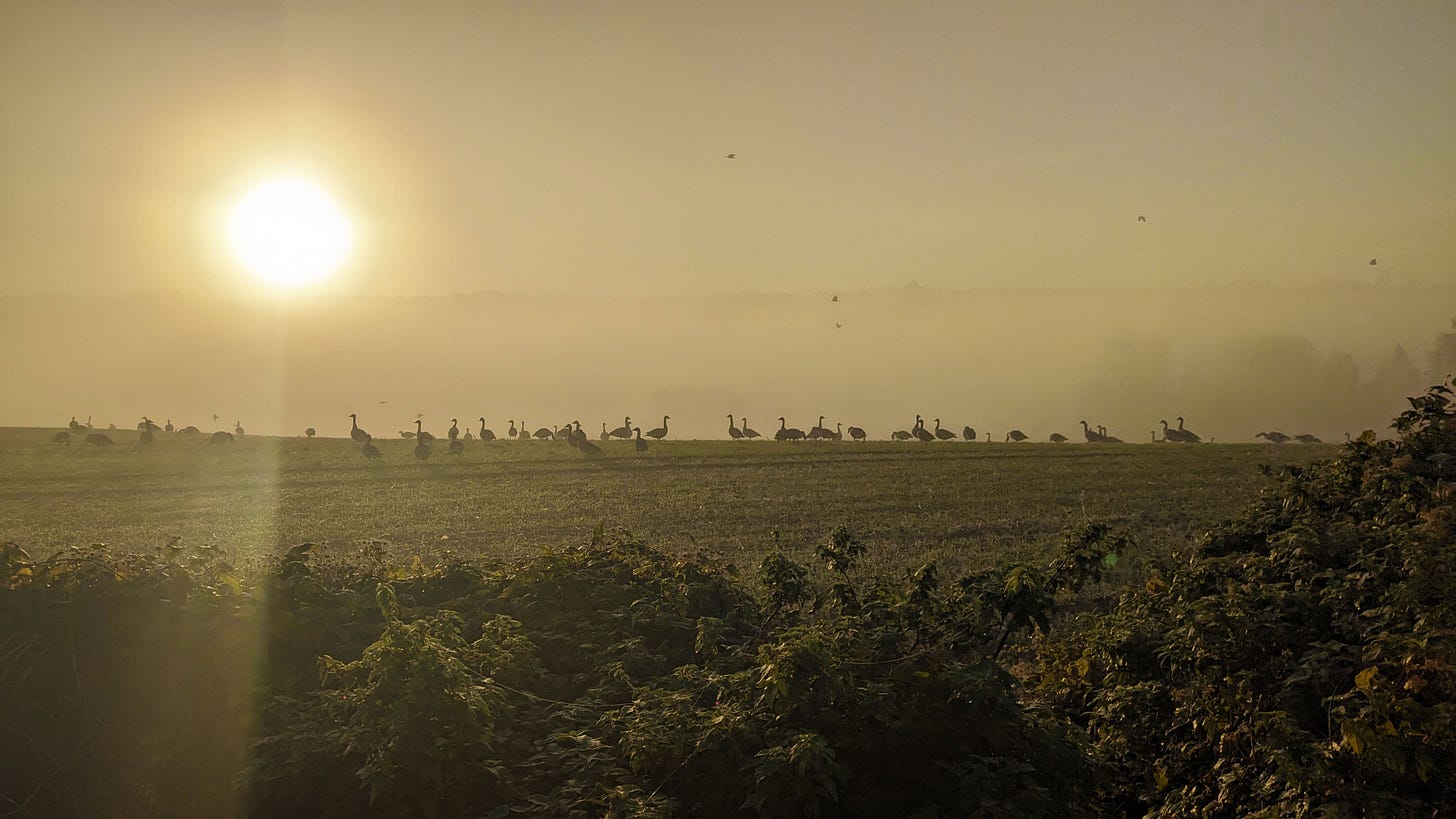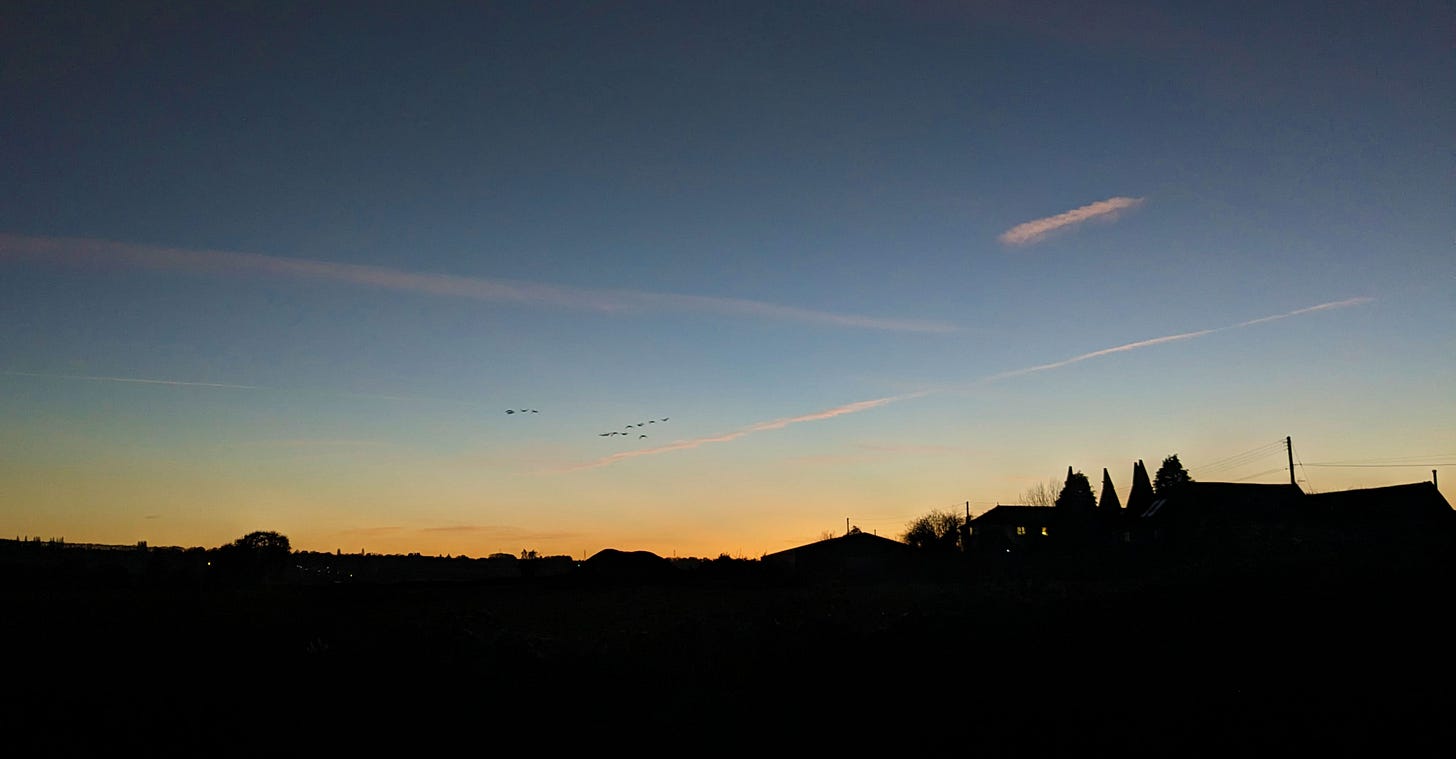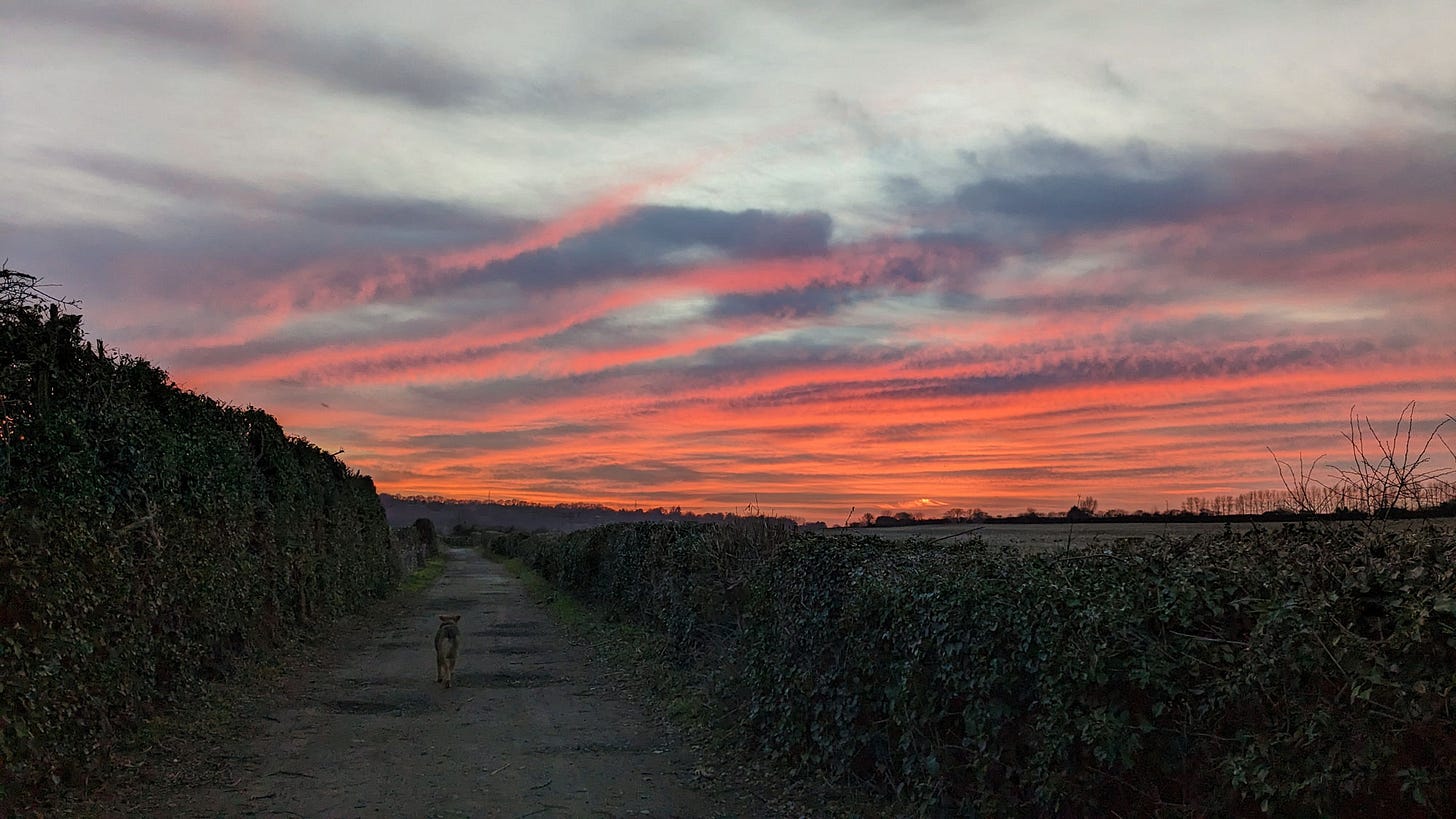Right now my dog walks are dominated by geese. Most days I’ll walk down the track near my house to be greeted by hundreds of them. The path sits between two fields, and at this time of year, whether I’m walking at sunrise or sunset, there’s a gaggle of geese to be found (mostly Canada, greylag and Egyptian), feeding, honking, flapping, plodding about. I am very grateful that Noushi is oblivious to them. And that she indulges my curiosity, sitting there patiently as I observe the geese or try and capture a photo of them as they take flight.
The more I see the geese, the more curious I get, and while I still can’t quite seem to figure out their habits, or where exactly they go to roost (other than assuming it’s somewhere along the Medway), I have discovered lots of new things about geese. Here are some facts I thought you might find interesting…
Goose facts
The collective noun for a group of geese is a ‘gaggle’, but only when they are on the ground. During flight, a group of geese is called a ‘skein’.
Canada geese produce around a kilo of poo each a day, which is just over 75% water (since they don’t pee).
Egyptian geese aren't true geese, they're actually members of the shelduck sub-family, Tadorninae.
Canada geese were first introduced from North America to the UK in St. James's Park (London), in the 17th century. After the Second World War, the birds spread across the UK and there are now there are thought to be over 55,000 breeding pairs here (according to BTO estimates), with populations increasing in winter months.
Geese tend to be monogamous and will normally pair for life, depending on their breeding success.
You should never feed geese (or ducks) bread, as it fills them up without giving them any of the nutrients they need. Bread can cause malnutrition and affect growth, leading to a wing deformity called ‘angel wing’, where, as the bird grows, the last joint of the wing fails to develop properly and twists, causing wing feathers to stick out instead of lying flat against the body.
Canada geese are on the list of invasive species in the UK.
Geese moult after the breeding season and they are flightless for about a month while they wait for their new feathers to grow in.
Scientists have determined that the V-shaped formation that geese use serves two important purposes. Firstly, it conserves their energy: “Each bird flies slightly above the bird in front of them, resulting in a reduction of wind resistance. The birds take turns being in the front, falling back when they get tired. In this way, the geese can fly for a long time before they must stop for rest”. Secondly, the V formation means it is easier to keep track of every bird in the skein: “Flying in formation may assist with the communication and coordination within the group. Fighter pilots often use this formation for the same reason”.
Researchers also think that the honking sound geese make as they fly is used to help maintain the integrity of the flock while they fly - it means they can co-ordinate position shifts within their V formation.
Got any other goose facts? Share ‘em in the comments!
Mystery Goose
I keep spotting one goose that doesn’t look quite like the others (fourth goose in from the left in the photo above) and I’m wondering if it’s a Canada-greylag hybrid?! Any thoughts? I only ever see it when Ive forgotten my binoculars of course, so I haven’t been able to have a proper look!
Haikus
Earlier this week, Beth from
shared a stunner of a post about haikus and I wanted to share it with you because it really inspired me…It is a kind of poetry that can root us to the moment whilst somehow stitching us into the tapestry of time as we witness something in the natural world that has been witnessed over and over throughout the centuries. The moon. A grasshopper. Wind in the pines. Haiku can attune us to the tiniest detail by what is said, and make us sense the scale of the universe and time itself by all that is left unsaid.
I had fun writing some haikus today. I have no idea what I’m doing (particularly when it comes to punctuation), but I’ve definitely enjoyed trying something new and, as Beth says, it certainly helped me capture a moment.
Sun glows through the mist
Ivy turns to face the light
Geese gather at dawn.
Honks instruct the skein
Wings beat methodically
But where do they go?
Clouds burst into flames
Sun melts into horizon
Calling me closer.
—
(I have three alternate lines for that last one, it was hard to choose)
—
Maybe you’d like to try your hand at writing a haiku too? Head over to Beth’s post for instructions and examples.












Geese! I don't think i've ever walked past a geese NOT in fear. They're intimidating looking fellas.
When I visited Scotland (from Canada) for the first time this spring I saw Canadian geese at Arthur's Seat in Edinburgh and was like, HEY! What are YOU guys doing here!? Haha